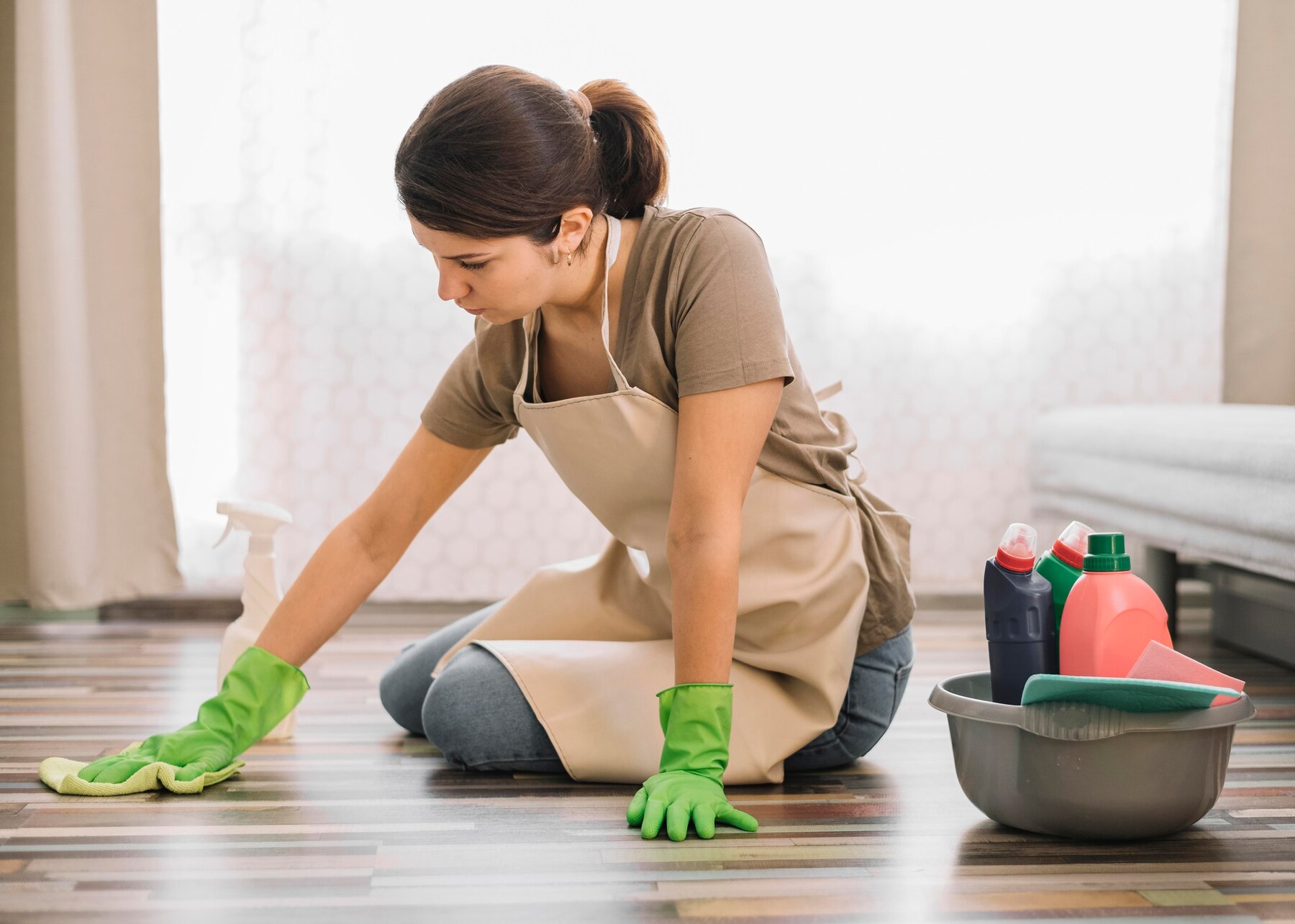Step-by-Step Everyday Cleaning Guide: Specifically How to Scrub the Surfaces, Vacuum Carpets, and Clear Out Any Clutter Effectively
Step-by-Step Everyday Cleaning Guide: Specifically How to Scrub the Surfaces, Vacuum Carpets, and Clear Out Any Clutter Effectively
Blog Article
Comprehending the Demand for Completely Disinfecting and Sterilizing Regularly Touched Surfaces in High-Traffic Areas
In the world of public health and security, the meticulous sanitation and sanitization of frequently touched surfaces in high-traffic locations stand as paramount actions in preventing the spread of hazardous pathogens. By exploring the numerous elements of surface area sanitation, from the dangers associated with neglecting cleansing procedures to the efficient methods that can be employed, a more clear understanding emerges of the crucial role these techniques play in safeguarding public wellness.
Relevance of Surface Sanitation
Highlighting the comprehensive sanitation of high-traffic surface areas is crucial in maintaining a sanitary environment and protecting against the spread of dangerous microorganisms. High-touch surfaces such as door takes care of, light switches, lift buttons, and kitchen counters act as reproducing grounds for infections and bacteria. Regular sanitation of these surfaces is imperative to minimize the risk of contamination and transmission of health problems.
By carrying out a durable disinfection method, organizations and organizations can create a more secure environment for workers, site visitors, and customers. Proper surface sanitation not just reduces the spread of transmittable illness however additionally instills confidence in the tidiness and safety and security of the premises. This positive technique shows a dedication to health and wellness, which is specifically essential in high-traffic locations where the probability of direct exposure to virus is heightened.
In addition, surface area sanitation plays an important function in general infection control approaches. Combined with hand hygiene practices, wearing masks, and maintaining physical distancing, extensive sanitation of high-touch surface areas develops a detailed protection against the transmission of unsafe microbes. Focusing on surface disinfection is a vital part of an all natural strategy to wellness and security in shared spaces.
Risks of Overlooking Cleaning Practices
Disregarding detailed sanitation of high-traffic surfaces considerably heightens the threat of viral and microbial contamination, positioning a severe risk to the health and wellness of people frequenting these rooms. Failing to carry out appropriate cleaning techniques can lead to the accumulation and spread of harmful virus, including bacteria and infections, on regularly touched surfaces such as doorknobs, handrails, lift buttons, and countertops.

Furthermore, neglecting the significance of detailed cleaning not only endangers the well-being of people however likewise undermines initiatives to maintain a tidy and hygienic environment. It is important to recognize the importance of proper sanitation methods in stopping the spread of infections and safeguarding public wellness.
Efficient Disinfection Approaches
To maintain optimum cleanliness and reduce the risk of contamination on high-traffic surfaces, utilizing efficient sanitation approaches is essential. One of the most effective and common sanitation methods is using chemical disinfectants.
Another effective technique is the usage of UV-C light. UV-C light has actually been shown to be reliable in eliminating a vast array of microorganisms by disrupting their DNA structure, hence stopping them from reproducing. It is important to utilize UV-C light correctly, ensuring that the appropriate intensity and exposure time are applied to achieve the wanted sanitation results.
Furthermore, employing heavy steam cleaning as a sanitation method can be very efficient, especially on surface areas that are heat-resistant. Steam can pass through porous surfaces and eliminate germs, infections, and other virus efficiently. When utilizing heavy steam cleansing, it is necessary to make certain that the surface gets to the required temperature for an enough quantity of time to ensure appropriate disinfection.
Impact on Public Health
The upkeep of high standards of tidiness and sanitation on high-traffic surfaces plays a critical function in guarding public health. Often touched surface areas in locations with high footfall, such as doorknobs, hand rails, lift buttons, and washroom centers, act as reproducing grounds for damaging virus. Falling short to effectively decontaminate these surface areas can cause the quick spread of transmittable diseases within communities. By executing detailed sanitation protocols, the risk of transmission of viruses, germs, and other germs can be considerably lowered.
Efficient sanitation practices not just shield individuals from dropping unwell however likewise contribute to the overall health of culture. Public wellness authorities stress the value of preserving clean environments to avoid outbreaks and contain the spread of illnesses. In high-traffic locations like airport terminals, schools, healthcare facilities, and mass transit systems, the effect of strenuous sanitation procedures can not be downplayed. Prioritizing the sanitization of frequently touched surface areas is an aggressive technique to advertising public wellness and boosting the security of individuals in common rooms.
Applying Routine Cleaning Methods
Quickly setting up and adhering to a constant schedule of cleaning methods is critical for keeping the cleanliness and security of high-traffic surface areas. Normal cleaning methods are vital in preventing the accumulation of bacteria and pathogens on frequently touched surface areas, specifically in areas with high foot web traffic. By applying a systematic approach to cleansing, companies can effectively decrease the threat of disease transmission and create a much healthier setting for employees, customers, and the public.
To develop a reliable cleansing timetable, it is important to recognize high-traffic locations that call for frequent interest. These areas may consist of doorknobs, hand rails, lift switches, toilet centers, and common tools. Implementing a routine cleaning regimen that targets these surfaces multiple times a day can substantially lower the spread of unsafe bacteria and viruses.
Moreover, making use of appropriate cleaning agents and disinfectants is key to ensuring that surfaces are completely disinfected. Regular training of cleaning staff on appropriate cleansing strategies and the relevance of adherence to the cleaning schedule is also vital in keeping a sanitary setting. By focusing on constant cleaning protocols, companies can advertise the health and wellness and wellness of individuals defrosted and cleaned every few months who connect with these high-traffic surface areas.

Conclusion
In final thought, it is important to prioritize comprehensive sanitation and sanitization of regularly touched surface areas in high-traffic areas to prevent the spread of harmful virus and preserve public health. It is vital to recognize the value of preserving clean surface areas in high-traffic areas to make certain the health of the neighborhood.
In the world of public health and wellness and safety, the thorough disinfection and sanitization of often touched surfaces in high-traffic locations stand as critical actions in stopping the spread of hazardous virus. By discovering the numerous facets of surface area disinfection, from the dangers linked with ignoring cleaning methods to the effective approaches that can be employed, a clearer understanding arises of the important function these techniques play in protecting public health and wellness.Additionally, utilizing vapor cleaning as a sanitation approach can be highly reliable, especially on surface areas that are heat-resistant. When making use of steam cleaning, it is vital to ensure that the surface gets to the required temperature for an adequate quantity of time to guarantee proper disinfection.
In verdict, it is important to focus on comprehensive disinfection and sanitization of often touched surface areas in high-traffic locations to stop the spread of hazardous microorganisms and keep public wellness.
Report this page